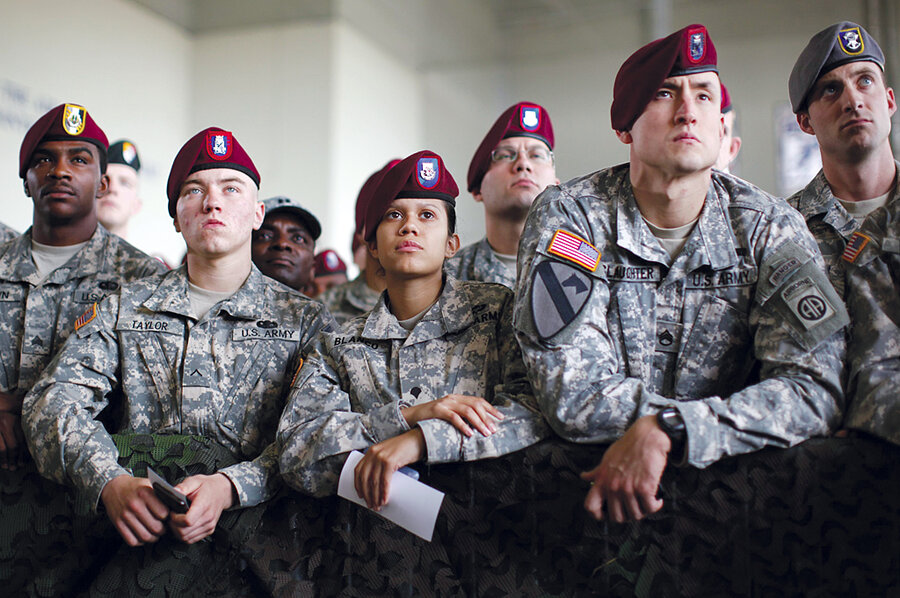Women warriors: How close to combat?
Loading...
When you think about the growing role of women in combat in the US military, it’s probably best not to envision either “G.I. Jane” or “Private Benjamin.” Women in the military are neither celluloid heroes nor sad sacks. The warriors Anna Mulrine interviewed in a Monitor cover story found simply want equality: the same rules, regulations, and duties as men, even if it means the same danger, tedium, and privation that men have long endured on the front lines.
You’ll meet Lt. Col. Tammy Duckworth, who lost both legs when her Black Hawk helicopter was hit by a rocket-propelled grenade in 2004 in Iraq. To her, the question is not whether combat is too risky for women or whether mixed genders might hurt unit cohesion. “Trust me,” she says, “to have the intelligence to assess the risks and decide to take them in order to have the amazing privilege of serving my country.”
Combat, after all, is risky for everyone. Which is why all enlistees, regardless of gender, deserve to be treated with respect by their comrades in arms, the officers they report to, and the society they serve. Too often, that has not been the case, as seen in “The Invisible War,” a documentary on rape and sexual harassment in the military (see this review by the Monitor's Peter Rainer).
As a Pentagon correspondent, Anna Mulrine has lived on the front lines. In 2006, she bivouacked in the embattled Iraqi city of Fallujah. In 2011, she operated out of a NATO outpost in Afghanistan’s Helmand Province. There were uncomfortable moments, she notes, but not always in ways you might think. For instance, matters like hygiene and privacy were nonissues. “When it came to bathrooms, it turned out that the guys wanted privacy for themselves even before they had to accommodate women. So in Fallujah they put up a plywood wall, and in Helmand there was a separate tent.”
Sure, gender distinctions remained. Young men were reluctant to share vivid details of combat with her. But they often opened up about their families and fears. And when it came time to face danger, most differences faded. With everyone suited up in body armor and helmets, lugging their gear, Anna says, “it is also almost impossible to tell Frank from Steve or Steve from Jennifer.”
•••
You might also enjoy Amy Black’s commentary, which explodes the belief that everybody in the US electorate has become politically polarized. The less appreciated development, she writes, is the rise of independent voters. And guess what they want? Not shouting, gotchas, or tallying slights. They want moderation. While loud voices and clever put-downs get a lot of air time, voters consistently keep their own counsel and choose wisely. That’s worth remembering as Republicans and Democrats – and the political-action committees that love them – spend millions on campaign ads.
With that in mind, this is probably a good time to remind readers that the Monitor sides with no political party and endorses no candidates. While it is impossible to balance every sentence of every news story so that left and right get exactly equal ink, you’ll see that we maintain balance over time. Like the voters that Professor Black writes about, we are biased toward independence – independence of thought. If you believe we are falling short in some regard, please let me know.
John Yemma is editor of the Monitor. He can be reached at editor@CSMonitor.com.






